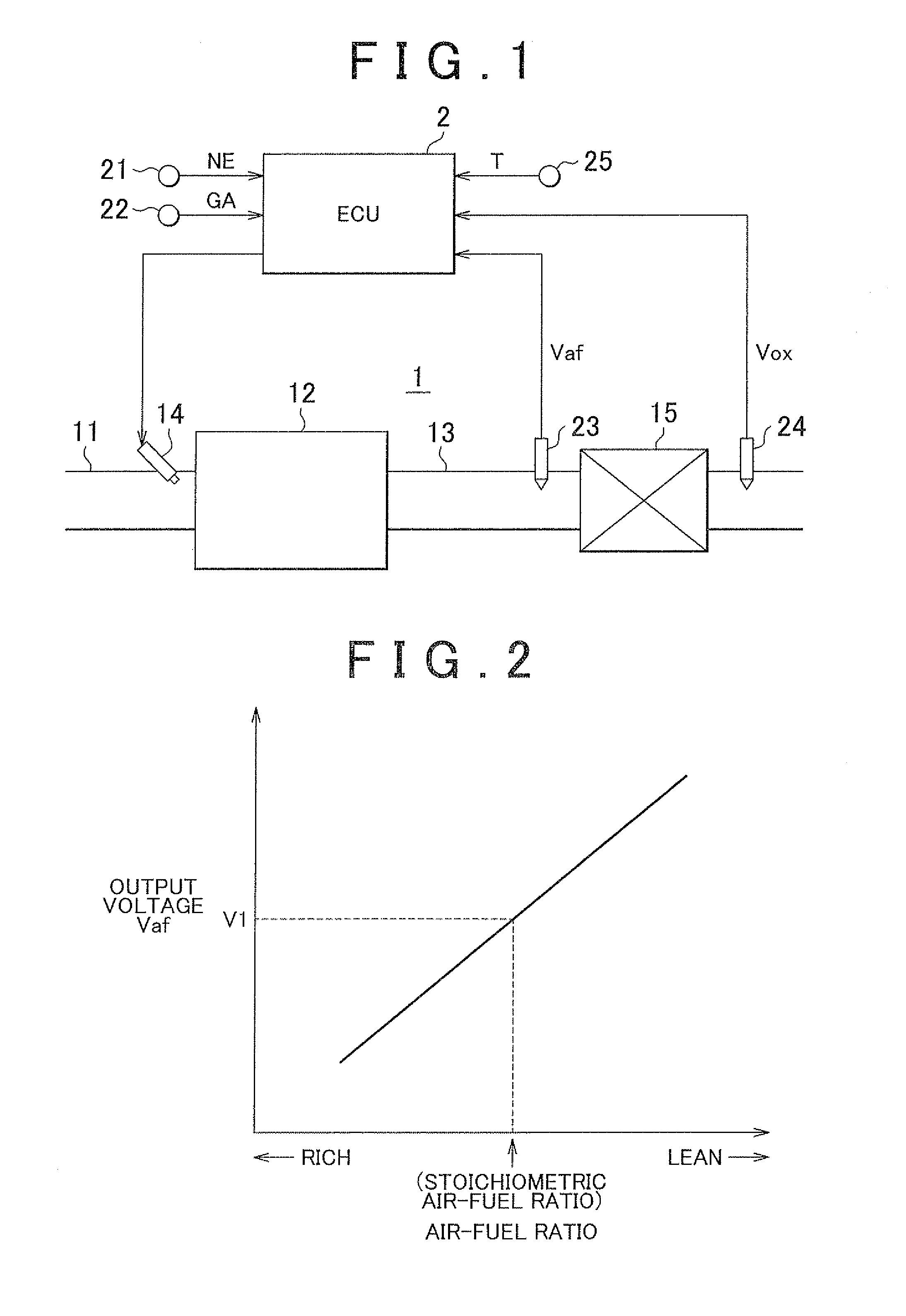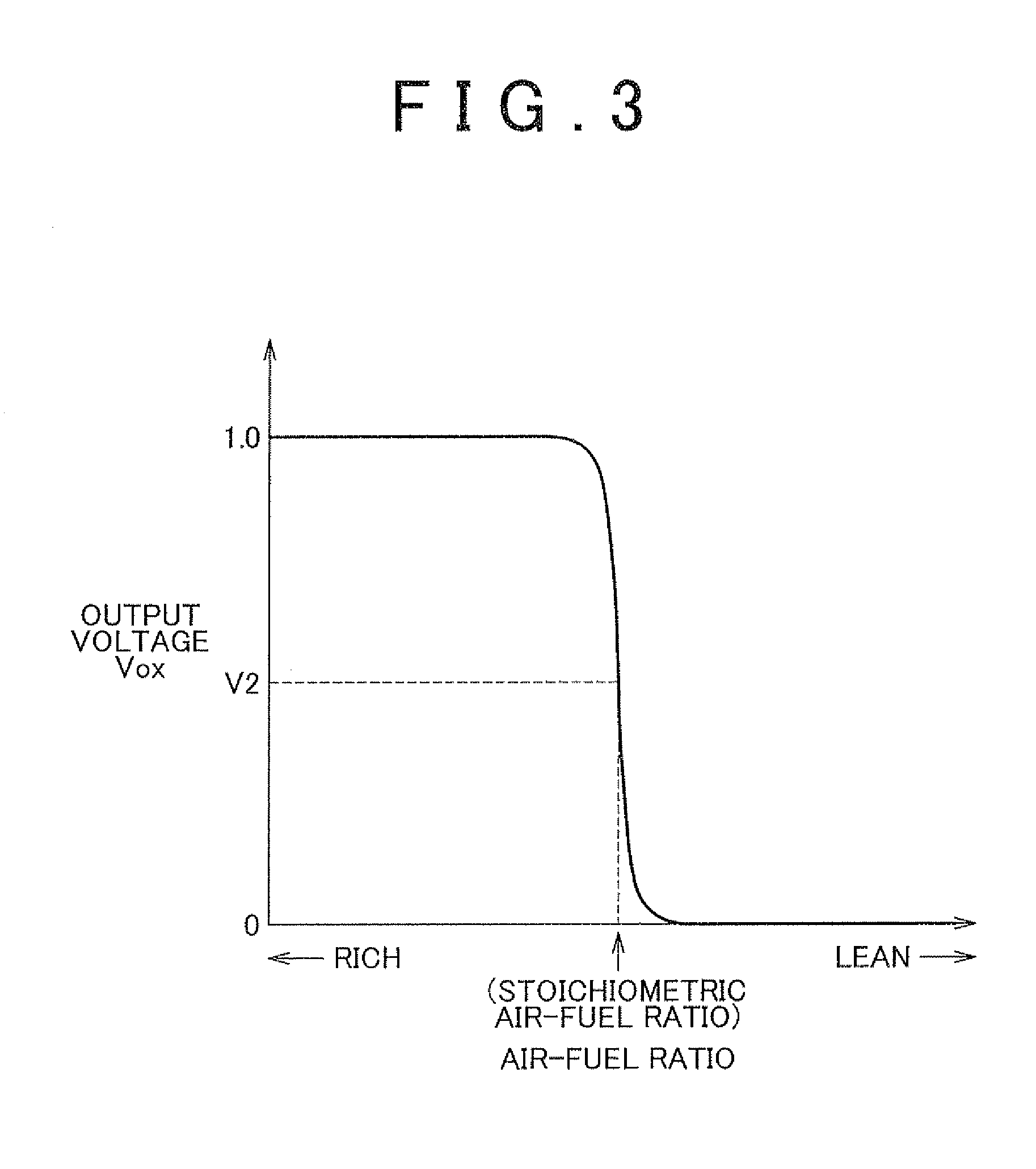Internal combustion engine exhaust gas control apparatus and abnormality determining method thereof
- Summary
- Abstract
- Description
- Claims
- Application Information
AI Technical Summary
Benefits of technology
Problems solved by technology
Method used
Image
Examples
Embodiment Construction
[0049]Hereinafter, a first example embodiment in which an exhaust gas control apparatus of an internal combustion engine of the invention is embodied as an exhaust gas control apparatus for port injection type gasoline engine (hereinafter, referred to as “internal combustion engine 1”) that is mounted in a vehicle will be described in detail with reference to FIGS. 1 to 7.
[0050]FIG. 1 is a schematic diagram of the general configuration of the internal combustion engine 1 and an electronic control unit (ECU) 2 that controls the internal combustion engine 1. As shown in FIG. 1, the internal combustion engine 1 includes an intake passage 11, a combustion chamber 12, and an exhaust passage 13. The intake passage 11 is a passage that supplies air to the combustion chamber 12. Also, a fuel injection valve 14 that injects fuel into an intake port of the intake passage 11 is provided in the intake passage 11. Air supplied through a throttle valve in the intake passage 11 mixes with fuel inj...
PUM
 Login to View More
Login to View More Abstract
Description
Claims
Application Information
 Login to View More
Login to View More - R&D
- Intellectual Property
- Life Sciences
- Materials
- Tech Scout
- Unparalleled Data Quality
- Higher Quality Content
- 60% Fewer Hallucinations
Browse by: Latest US Patents, China's latest patents, Technical Efficacy Thesaurus, Application Domain, Technology Topic, Popular Technical Reports.
© 2025 PatSnap. All rights reserved.Legal|Privacy policy|Modern Slavery Act Transparency Statement|Sitemap|About US| Contact US: help@patsnap.com



